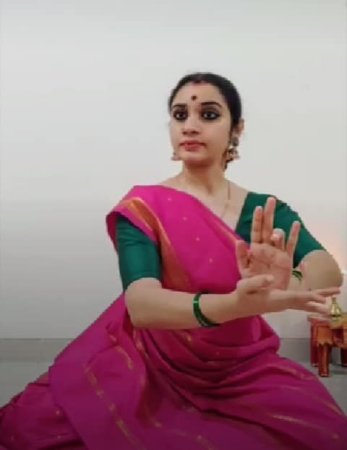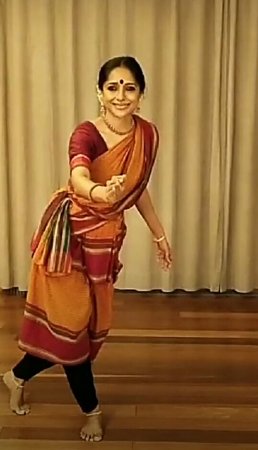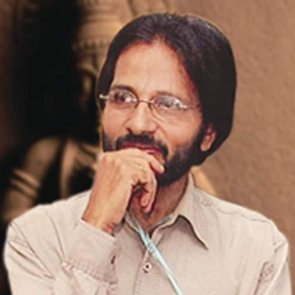
|
 |

|
 |
Identity and Aesthetics - V. Kaladharan e-mail: kaladh@rediffmail.com April 24, 2020 The coexistence of several highly evolved dance and theatre traditions in Kerala has problematized the concept of identity of each form especially with the incredible outreach of Kathakali in the last century. Did Kathakali, an eclectic dance-drama, exert influence on Kutiyattam, Krishnanattam, Mohiniyattam and Thullal? While intransigent connoisseurs came down heavily upon the Kutiyattam artists of Kerala Kalamandalam in the late 1980's for diluting the identity of this Sanskrit theatre tradition by borrowing elements from Kathakali, eminent playwright and theatre-director, the late Kavalam Narayana Panicker derided the reformations in the vocal music of Krishnanattam (dancing the life-story of Lord Krishna that has for long been confined to the Guruvayoor temple) along the lines of Kathakali vocal music. Against the above background, I had a prolonged interview with the legendary Kutiyattam actor, the late Ammannoor Madhava Chakyar, at his residence, for AIR, Thrissur. In the course of our conversation, I asked him the reason why he insisted that the young Kutiyattam practitioners keep themselves away from Kathakali. Chakyar replied, "This is a piece of advice handed down to me by my immediate ancestors. By incessantly or occasionally watching Kathakali, a relatively more popular performance tradition, a student of Kutiyattam is most likely to be influenced by its techniques. He/she may if so unintentionally alter the identity of Kutiyattam." Chakyar was undoubtedly voicing his concerns about the task of protecting the identity of Kutiyattam while it could be made applicable to all the solid art forms categorized by the term 'classical'. Personally, I was not fully convinced of his stubbornness in preserving diverse artistic traditions something like watertight compartments. Decades have passed since then. Chakyar's words now return to my ears as gospel truth. 'Social distancing' has become a catchword as part of preventing Covid 19. Likewise, there is an urgency to coin the term 'artistic distancing' and make it binding to the young crop of Bharatanatyam, Kuchipudi and Mohiniyattam dancers in the sense that they shall restrict themselves to their respective art forms instead of letting themselves be swayed by the acting techniques of the ancient theatre traditions. Dancers belonging to these genres, if carried away by the theatrical intricacies of Kutiyattam / Nangiarkuttu / Kathakali, might go in for unwarranted articulation through their upangas and slip into melodrama. This was evident in the recital of Meera Sreenarayanan who presented, among others, an item on the clichéd "Kannaki" on Instagram recently hosted by 'alap.' Within the language of Bharatanatyam, the extremity of her expressions of anguish and anger as Kannaki seemed to be incompatible. (It was just by accident I watched a couple of dance recitals including that of Meera on Instagram). The identity of Bharatanatyam, like in all other classical dance forms, is organically embedded to its highly codified angikabhinaya further enriched by the rest including music, vocal and instrumental. If any change is effected deliberately on one or more of the components of this composite form, the identity of Bharatanatyam will be at stake. Mizhavu is a musical instrument fundamentally associated with Kuttu and Kutiyattam. It can never be transplanted to another traditional art form strikingly different in texture and treatment. Even for Kathakali which owes a lot to Kutiyattam for its theatre-techniques like pakarnnattam (one and the same actor enacting multiple roles) the sound of the Mizhavu as its accompaniment will be bizarre. I am therefore wondering why the gifted young dancer ventured into this sort of an unwholesome experimentation.  Meera Sreenarayanan  Meenakshi Srinivasan (Photo: Sejas Mistry) In contrast, Meenakshi Srinivasan appealed to me as awesome as she did, apart from an item based on Ramayana, "Alarulukuriyaga" of Annamacharya set to raga Shankarabharanam. Alamelumanga became beauty personified as the movements and expressions of the dancer gelled immaculately with the jathis. Both the heart of Hari and that of the Prekshas melted when the dancer radiated an extraordinary authority over the aesthetics of her performance. My fervent hope is that Meenakashi may not fall in for the acting techniques of Nangiarkuttu / Kutiyattam / Kathakali. So far she is in a safe zone. Let the Lord Almighty give her the courage to stick to the art form she is deeply conversant with. As any sensible reader can make out, my apprehension is aimed at undergirding the fact that the aforesaid three art forms are essentially anchored on theatre although I would argue that Kathakali is more a dance form than a drama tradition. Extensive eye-exercise is part and parcel of traditional theatre/dance drama. The protagonist on stage shows the arrival of a second character by looking ahead for which he/she needs to have his/her eyes wide-opened denoting the other's entry from a distance. In Kathakali, Ravana's description of sage Narada descending from the heaven and the recollection of Kailasodharanam (lifting of the mountain Kailasa) afterwards demand intensive use of the upanga; eyes. If a Bharatanatyam, Kuchipudi or Mohiniyattam dancer goes in for eye-expressions of similar magnitude, it will tell upon the structural finesse of the dance form concerned. As part of portraying sringara, if they flutter their eyebrows, how will it look? Of course, the vinyasa surfacing in the Varnam, Padam and Javali do have scope for satwikabhinaya. But its mode of execution and context are diametrically opposite to that of Nangiarkuttu or Kutiyattam. In Bharatanatyam, there is no question of superimposing rasabhinaya over angika. The organic framework of Bharatanatyam, irrespective of its stylistic distinctiveness, is anchored on the entire gamut of the precisely executed hand gestures, body movements, footsteps and footwork. As far as I understand, rasabhinaya, though an inevitable complement of angika in any dance tradition, cannot, for reasons obvious, be its primary determinant. The long and short of my contention is that a dancer who is weak in facial expressions but adept at the movement vocabulary can very well be tolerated. On the other hand, a dancer least proficient in the movement dynamics but excellent in facial expressions is likely to be boredom incarnate for the Prekshakas once the initial excitement fades out. Interdisciplinarity might enrich the academic studies. Unfortunately the same cannot be applied to the time-tested practical training and performance culture of the stylized Indian traditional arts. Although 'uniqueness' is a problematic terminology, it has its enduring relevance in the context of traditional Indian performing arts. Each and every Indian dance form recognized as 'classical', holds on to a set of specific features and norms which can very well be considered as non-variables. If one dares to effect a change in it, he/she might be hailed as a rebel or iconoclast by the so called progressive intellectuals in our society. But none of those sensitive to and knowledgeable about the abstract and concrete grace of Indian dance tradition, its music, rhythm and tempos can digest such blatant rebelliousness. Compared to all other Indian classical dances, Bharatanatyam alone can claim to have an unbroken chain of outstanding dancers, young and elderly, over half a century. They need not nurture a sense of insecurity for each one does have his/her own constituency of admirers. From my long-standing association with dance and theatre artists from the west, I have gathered the impression that most of them are capable of having only a casual acquaintance with the Indian art forms. They are, more often than not, bowled over by the exotic charm of Bharatanatyam / Kathakali / Kutiyattam / Nangiarkuttu. The interiors of the art often elude them. Delving deep into any one of these art forms is a time consuming process. The highly materialistic western society guided by ruthless rationality and pragmatism cannot identify with the soul of Indian performing arts. Meditative learning of an Indian dance form is intertwined with our complex cultural heritage which an Indian alone can have direct and intimate access to. This explains why we still do have the monopoly over our artistic legacy. But if our young artists with proven talent lack conviction in their field and make desperate attempts to borrow techniques from multiple sources, it will be the beginning of compromise, attenuation and distortion paving the way sooner or later for the ultimate degeneration of every single art form.  Former Deputy Registrar of Kerala Kalamandalam, V Kaladharan is also an art critic. He has published several articles at the academic level. 'From Meditative Learning to Impersonal Pedagogy' was published a couple of years back in an anthology 'Qui Parley' initiated and released by scholars and writers from the University of California, Berkeley. His articles on Indian performing arts and literature regularly appear in magazines and journals, and in the Friday Page of The Hindu. Comments * Some thoughts - Is the identity of an art form immutable? Clearly Kathakali has borrowed from other forms such as Kutiyattam, Krishnattam, and even Theyyam. Kathakali itself has evolved over time. And so has Bharatanatyam and Mohiniyattam. The point is that art forms developing in a certain regional locus have borrowed from each other and will continue to do so. Also, dancers without proper abhinaya skills are dime a dozen and boring to watch. I think they will benefit from better abhinaya training, the application of which should be intelligently done with appropriate aesthetic reasoning. - Dreamcatcher (April 25, 2020) * As a Mohiniyattam performer I totally agree to what Kaladharan sir has expressed in his article above. Aesthetic features of each art form is completely different to one another. I think Kutiyattam and Kathakali are in same genre when it comes to the abhinaya techniques. Also its training methods are completely different than other art forms like Bharatanatyam or Mohiniyattam which follow rather simple and subtle facial expressions. From my knowledge, I can say that these two art forms do such vigorous training sessions in abhinaya (such as breathing techniques) because the ahaarya (dress and ornaments) that they use demands more visible abhinaya not only with face but the whole body. So if a Bharatanatyam or a Mohiniyattam dancer try to follow these techniques it will affect the total aesthetic appeal of that art form. - Anitha Moorthy (April 24, 2020) Post your comments Please provide your name and email id when you use the Anonymous profile in the blog to post a comment. All appropriate comments posted with name & email id in the blog will also be featured in the site. |